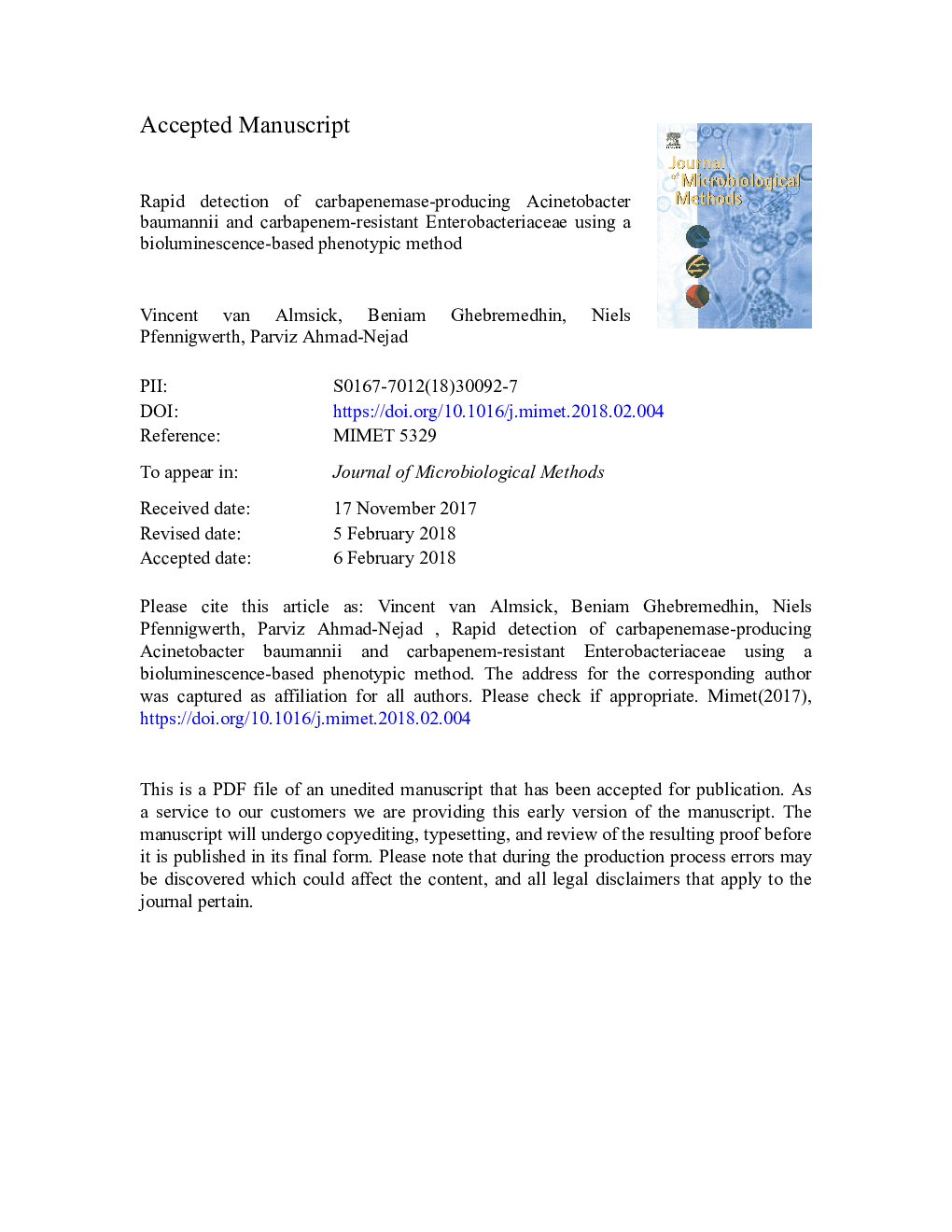| Article ID | Journal | Published Year | Pages | File Type |
|---|---|---|---|---|
| 8420447 | Journal of Microbiological Methods | 2018 | 22 Pages |
Abstract
Accurate detection of carbapenem-resistant Enterobacteriaceae (CRE) and carbapenemase-producing carbapenem-resistant Acinetobacter spp. (CP-CRA) constitutes a major challenge in laboratory diagnostics. We developed a bioluminescence-based carbapenem susceptibility detection assay (BCDA) which allows identification of CRE (carbapenemase-producing-CRE (CP-CRE) as well as non-carbapenemase-producing-CRE (non-CP-CRE) and CP-CRA in 2.5â¯h from culture media. This laboratory method was evaluated with CP-CRE and CP-CRA isolates producing different β-lactamases of different Ambler classes (A, nâ¯=â¯16; B, nâ¯=â¯25; D, nâ¯=â¯67) and 22 non-CP-CRE. The results were correlated with those obtained by BD Phoenix⢠and genotypic analysis results. The performance of BCDA on 123 validated CRE (except C. freundii isolates) and CP-CPA isolates revealed that 122 of 123 isolates were identified correctly. Only one OXA-48-producing Klebsiella pneumoniae was falsely classified. Among 45 meropenem susceptible Enterobacteriaceae (except C. freundii isolates) and meropenem susceptible Acinetobacter spp. strains tested, 44 were confirmed as susceptible by our BCDA. Overall, our BCDA had a sensitivity of 99% and a specificity of 98% and is a rapid and accurate assay which distinguished CRE/CP-CRA from meropenem susceptible Enterobacteriaceae and Acinetobacter spp.
Keywords
CREImipenemaseVIMNDMKPCOXAIMPVREMICNRCcarbapenem-resistant EnterobacteriaceaeAntibiotic susceptibility testingASTMRSAmethicillin-resistant Staphylococcus aureusVancomycin-resistant enterococciOxacillinaseGram-negative bacteriaRapid detectionMinimal inhibitory concentrationNew Delhi metallo-β-lactamasePhenotypic screeningMultidrug resistancecarbapenemase
Related Topics
Life Sciences
Biochemistry, Genetics and Molecular Biology
Biotechnology
Authors
Vincent van Almsick, Beniam Ghebremedhin, Niels Pfennigwerth, Parviz Ahmad-Nejad,
